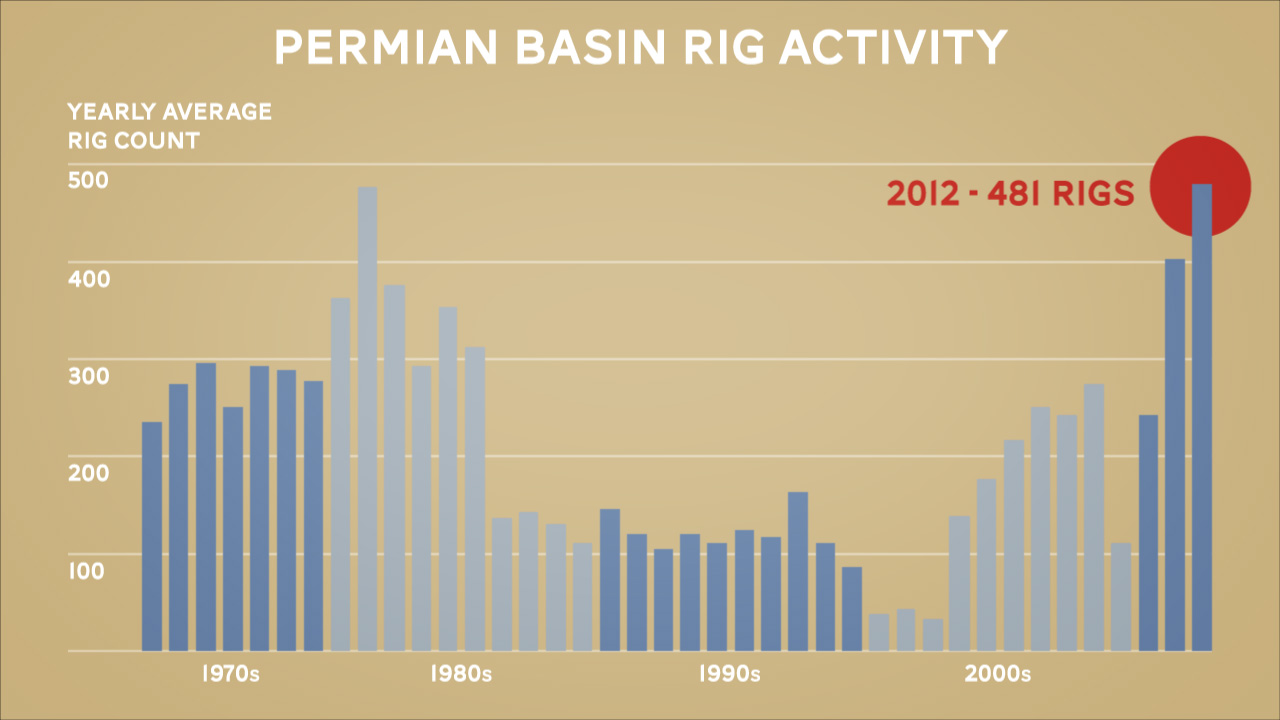Part II
The Texas Connection


Photo by Robert Yarnall Richie, Texas, 1938.
Courtesy SMU Central University Library
The shale revolution was Texas-led and Texas-bred. In fact, it’s so new that its history is still being written. Russell Gold, the senior energy reporter for the Wall Street Journal, just released a definitive account of the history of fracking with his book The Boom: How Fracking Ignited The American Energy Revolution and Changed the World. One of the first lessons Gold reveals is that the new techniques of fracking are not new at all. Fracking in one form or another has been deployed since the 1860s with a variety of approaches, including dynamite and even nuclear detonations. The great enabler for the modern version of shale production was the combination of hydraulic fracturing, horizontal drilling, and sophisticated fluids that include a variety of chemicals. But even those techniques had been used independently for decades. The idea that shale would contain oil and gas is not new either, as geologists have known for a long time that these formations—the source for major oil and gas reservoirs—hold a lot of the desired materials. It was just technologically and financially prohibitive to extract them.
But then a Texas oil and gas producer, George Mitchell, cracked the code for making shale a worthwhile endeavor. With stubbornness, persistence, and a capable team, he achieved success after decades of attempts that would have made other experimenters give up, and so now we’re off to the races. In many ways Texas is the epicenter of the worldwide energy revolution. The boom is on. Thankfully—or possibly regretfully—this is familiar territory for us.
When the original Texas energy revolution symbolically and literally erupted with Spindletop more than a century ago, it put the world on notice that instead of depending on territories under the heavy hand of Russia, Texas could be the energy salvation. At the time, Azerbaijan was by far the world’s largest oil producer. The Nobel brothers, of Nobel Prize fame, earned a significant fortune there en route to endowing their famous award for scholarly breakthroughs. As a counterweight to Russian control over oil and gas, Texans happily exported their oil and expertise for a nice profit.
When this latest Texas revolution broke onto the scene a few years ago in the Barnett Shale outside Fort Worth, it put the world on notice once again. Since more than half of Russian gas exports to Europe pass through Ukraine, it might serve Europe—and other countries across the globe—to consider Texas as an alternative source of gas, or as a model for how to produce your own oil and gas. Any way you slice it, the Lone Star State is leading the way.
The good news is we have major shale formations in production in four corners of Texas: the Barnett Shale in North Texas, the Haynesville in East Texas, the Eagle Ford in South Texas, and the Permian in West Texas. There is an old adage in the oil industry that Jack Randall, BS ’72, MS ’75, Life Member, and successful oil and gas veteran likes to share. If someone asks, “Where’s the best place to find oil?” the answer is, “The same place where it has been found before, just dig deeper and try a little harder.” Such is surely the case in the Permian Basin, which has come alive again with the hustle and bustle of another oil boom.

Hover
 Rig activity in the Permian Basin is at its highest level since the 1980s. | © Melissa Reese | Source: Concho Resources
Rig activity in the Permian Basin is at its highest level since the 1980s. | © Melissa Reese | Source: Concho Resources
In Texas we love our oil booms. Pennsylvania, which hasn’t had an energy boom since its oil fields and anthracite mines played out in the late 1800s, is experiencing its own version of an energy boom today with the Marcellus and Utica Shales. In Texas this is something like our fourth boom, depending on how you count, and we know the boom will eventually end. There’s a famous bumper sticker in Texas that reads something like this: “Dear Lord, please give me just one more boom and I promise not to piss it all away next time.”